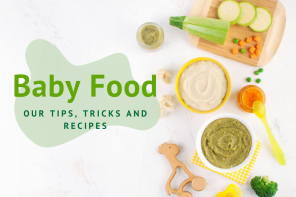Mindful eating: a healthy relationship with food
Have a healthy relationship with food, enjoy it with no regrets and be fully conscious of your eating habits. Is it possible? Yes! But how? The answer is mindful eating.
With the daily routine and technology at our fingertips, sometimes you eat while looking at your phone without paying attention to your food.
So we’ve done our research and want you to learn everything about mindful eating so you can discover the big benefits it’ll give your body and your mind.
So what is mindful eating?
Mindful eating is based on mindfulness techniques.
Complete consciousness lets you to focus on the now. The idea is for you to be fully aware of your feelings, sensations and thoughts, accepting them without judgement.
So mindful eating means concentrating on the food you’re eating in the present moment. Being in the moment means analyzing the sensations and feelings you have when buying, preparing and consuming food – textures, tastes and smells.
It’s an opportunity to think about your eating habits, take charge of your digestive health, but most of all, enjoy your food.
Mindful eating also influences your perception of your body’s physical signals, meaning you’ll be aware of your hunger or satiety.
The role of satiety
Sometimes during a meal, you feel a sudden tension in the stomach after a few bites – that’s satiety.
Rarely do people wonder about satiety and bloating (general discomfort and tension in the stomach) while eating. There’s a blurred line (or rather one bite too many) between feeling satisfied and feeling full.
One of the goals of mindful eating is learning to recognize the signs of satiety.
What is satiety?
Satiety is the feeling of satisfaction after eating, meaning the feeling of not being hungry anymore without a knot in your gut. It’s the feeling of well-being after getting energy from food.
Learning to recognize your body’s signals allows you to be more aware of the amount and type of food you eat.
But how do you recognize satiety signals?
Learning to recognize the signs of fullness
Mindful eating encourages you to eat slowly, so take your time. Did you know that the intestine is considered your second brain? So let your gut transmit the message of satiety to your brain.
To be 100% in the present moment, pay attention to:
Intensity of flavours
Taking your time also means enjoying the taste of food more. By doing so, you may notice that the flavours are intense when you start eating. The more you eat and the more your stomach fills up, the more flavours lose their intensity and voilà! It’s one of the most well-known signs of satiety.
How fast you eat your food
Sometimes when you’re hungry, you start eating fast, then you start slowing down. It’s a clear sign that you’re starting to get full.
Feeling relaxed
You can say that the best sign of satiety after a good meal is feeling relaxed. This may be something you don’t realize very often, but if you practice eating mindfully, you’ll start to notice that you feel more relaxed when you eat. The feeling of relaxation also comes with a desire to get up from the table and continue your activities because you’ve regained the energy you need.
Mindful or intuitive eating: similarities and differences
You may have heard of intuitive eating. In fact, this practice has a lot of similarities with mindful eating, but with a few differences.
Intuitive nutrition is based on 10 principles and consists of rejecting any type of diet mentality, making peace with food and listening to your body.
The most important thing to know is that the 2 practices can go together on your path to a healthy relationship with food.
Remember!
It’s possible to practice mindful eating without applying intuitive eating, but intuitive eating requires mindful eating because you must first develop a degree of awareness of when to eat.
What are the benefits of mindful eating?
In addition to important health benefits (improved digestive health), mindful eating brings many benefits to your emotional and mental well-being and your relationship with food. Read more below.
Understanding your body’s signals
As you apply mindful eating to your life, you’ll become more attuned to your body’s signals. Not only will you understand when you’ve really reach satiety, but also the effects of certain foods. This will make it easier for you to see which foods are good for your digestion and which ones aren’t.
Healthy choices more often
Being fully aware of the foods you choose and eat will help you make healthier choices. According to Canada’s Food Guide, doing this could also help improve your eating habits, but remember that it’s all about balance.
Much needed breaks in your daily life
Mindful eating is about taking your time and consuming food with peace of mind. That’s why practicing this is the perfect time to take a break and get away from the hustle and bustle of everyday life. What better way to relieve stress and anxiety than by enjoying your food!
A better relationship with food
One of the great benefits of mindful eating is the new relationship you’ll build with food.
You’ll find that you’ll have a closer connection with your diet and be more curious about where your food comes from, whether it’s local produce, how it was produced and how it got to your table.
6 steps to mindful eating
Of course, to start a new routine, you have to follow certain steps. Here are 6 that will lead you to implementing mindful eating in your life.
Tip
Remember to apply them consistently so they become habit.
1. Start with your grocery list
It all starts at the grocery store. Take the time to analyze the nutritional value of the food you plan to buy. This will help you avoid the compulsive buying and you’ll feel more in control of what you consume.
2. Use all your senses
Use all your senses and be aware of what the food smells like, how it feels, the sounds it makes when you’re cooking, when you’re chewing it, the way it changes colour…
Ask yourself what emotions are you feeling at that moment and how is this food making you feel.
3. Sit down to eat only if you have an appetite, but not if you’re really hungry
If you’re extremely hungry because you skipped a meal, the urge to get rid of that feeling may make you to eat the first thing in sight. The problem with that is you’ll focus on satisfying your hunger rather than the quality of food and the pleasure of eating it.
4. Phones and distractions out of sight
It’s important that your meal be a time for a break and time to relax. We recommend setting aside electronic devices while you eat as they’ll only distract you and not let you concentrate on your delicious meal and the sensations you’re experiencing.
5. Be thankful for your food
Before taking the first bite, take a minute and look at your plate, really look at it. Try to be aware of all the resources and people it took to get that food to your table.
Be mentally thankful that you can enjoy it with the people around the table you’re sharing it with.
6. Chew slowly
Try chewing slowly because it allows you to savour every. single. bite.
And as you savour every. single. bite, all your attention will be focused on the sensations that the food produces in your body and you’ll know right away if you’ve reached satiety.
If you don’t finish everything on your plate, no worries. You can save it for tomorrow. Read this article to learn all about storing food.
To finish up, practicing mindful eating regularly can become a long-term habit. You’ll look at your relationship with food with new eyes – without judging yourself.
You’ll also know more about what you’re eating (think about learning more about functional foods and integrating them into your diet, for example).
Finally, you’ll live in the present always enjoying your meals.
So what do you think? Are you interested in making it part of your life? Let us know in the comments section.












